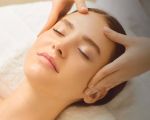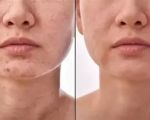- Why Spa Treatments Are Beneficial for Post-Workout Recovery
- Top Spa Treatments for Muscle Recovery
- How Massage Therapy Aids in Post-Workout Recovery
- The Benefits of Hydrotherapy for Muscle Relaxation
- How to Incorporate Spa Treatments Into Your Fitness Routine
- Real-Life Experiences with Post-Workout Spa Treatments
Why Spa Treatments Are Beneficial for Post-Workout Recovery
After an intense workout, your body requires rest and recovery to repair the muscles and tissues that were stressed during physical activity. While adequate sleep, nutrition, and hydration are essential parts of recovery, spa treatments offer a unique way to speed up the process and alleviate soreness. Many people find that spa services can help reduce muscle tension, improve circulation, and relax the mind, making them an excellent addition to your post-workout routine.
Additionally, post-workout recovery is about more than just physical relief—it’s about promoting mental well-being too. A visit to a spa provides an opportunity to unwind and de-stress, which can significantly improve your overall health and fitness performance. Whether you’re a seasoned athlete or someone who enjoys casual workouts, incorporating spa treatments into your recovery plan can enhance both your body’s repair process and your mental clarity.
Top Spa Treatments for Muscle Recovery
There are various types of spa treatments that focus on post-workout recovery. Here are some of the best treatments designed to help you relax, recover, and rejuvenate after intense physical activity:
1. Deep Tissue Massage
One of the most popular spa treatments for post-workout recovery is deep tissue massage. This type of massage targets the deeper layers of muscle and connective tissue, focusing on areas that are tense or sore after exercise. Deep tissue massage can help relieve muscle stiffness, improve blood flow, and reduce inflammation, all of which are crucial for muscle recovery.
2. Aromatherapy
Aromatherapy is often combined with massage therapy to enhance the recovery process. Essential oils like lavender, eucalyptus, and peppermint can help soothe sore muscles, reduce inflammation, and promote relaxation. The calming effects of aromatherapy are not just physical—they also help with mental recovery by reducing stress and anxiety levels, which can interfere with your workout progress.
3. Hot Stone Therapy
Hot stone therapy involves placing heated stones on key points of your body to promote relaxation and ease muscle tension. The warmth from the stones helps increase blood flow and relax tight muscles, providing deep relief. It’s particularly effective for alleviating muscle soreness and promoting a sense of calm after a vigorous workout.
4. Cryotherapy
Cryotherapy involves exposing your body to extremely cold temperatures for a short period, which can help reduce inflammation and accelerate recovery. Some spas offer cryotherapy sessions where you sit or stand in a cryotherapy chamber, which can aid in muscle repair by reducing swelling and promoting the body’s natural healing processes. Many athletes use cryotherapy for its anti-inflammatory benefits, making it an excellent option for post-workout recovery.
5. Facials and Skin Treatments
While facials may not directly address muscle recovery, they can still contribute to your overall wellness after a workout. Intense exercise can leave your skin feeling dehydrated or clogged, so a post-workout facial can help rejuvenate your complexion. Facials can improve blood circulation, detoxify the skin, and restore moisture—essential for maintaining a healthy glow after sweating it out at the gym.
How Massage Therapy Aids in Post-Workout Recovery
Massage therapy is widely recognized for its effectiveness in relieving muscle soreness, increasing circulation, and reducing stress. During a workout, muscle fibers undergo microscopic damage, which can lead to stiffness and discomfort. Massage therapy helps by increasing blood flow to the affected muscles, which accelerates the healing process and reduces pain.
Additionally, massage therapy stimulates the release of endorphins, which are natural pain relievers produced by the body. These endorphins help alleviate soreness and promote relaxation, making you feel more at ease after a workout. Whether you choose a Swedish massage for relaxation or a sports massage for targeted muscle recovery, massage therapy can be an essential tool in any post-workout recovery plan.
The Benefits of Hydrotherapy for Muscle Relaxation
Hydrotherapy, or water therapy, involves using water in various forms—such as hot tubs, saunas, or even ice baths—to help relax muscles and speed up recovery. After an intense workout, hydrotherapy can be incredibly effective in reducing muscle tension and promoting relaxation. The buoyancy of water helps relieve pressure on joints and muscles, which can reduce soreness and stiffness.
Hot water treatments, such as soaking in a jacuzzi or taking a warm bath, can help increase blood circulation, relax muscles, and promote overall relaxation. Cold water treatments, like ice baths, are used by many athletes to reduce inflammation and muscle soreness after intense physical exertion. Combining hot and cold treatments in a hydrotherapy session can provide a balanced approach to muscle recovery and pain relief.
How to Incorporate Spa Treatments Into Your Fitness Routine
Incorporating spa treatments into your post-workout routine can significantly improve your overall fitness progress. Here are a few tips for adding spa treatments into your recovery process:
1. Schedule Regular Visits
Plan to visit a spa regularly, especially after intense workouts or training sessions. Scheduling consistent post-workout spa treatments, such as massages or hydrotherapy, will help you stay on top of muscle recovery and reduce the risk of injury. Try to incorporate these treatments as part of your weekly or bi-weekly routine to maintain optimal recovery.
2. Pair Spa Treatments with Proper Rest
While spa treatments are an excellent way to relax and recover, they should be paired with adequate rest and recovery time. Make sure you’re allowing your muscles time to repair between workouts and integrating other recovery strategies like stretching, proper hydration, and a balanced diet into your routine.
3. Choose the Right Treatment for Your Needs
Depending on the type of workout you’re doing and the specific areas of your body that are sore, choose the spa treatments that will best address your recovery needs. For example, if you’ve done a full-body workout and are feeling general muscle fatigue, a full-body massage and hot tub soak may be beneficial. If you’ve been focusing on strength training and are dealing with localized muscle soreness, a deep tissue massage might be the right choice.
Real-Life Experiences with Post-Workout Spa Treatments
Many people have shared their positive experiences with post-workout spa treatments, highlighting the effectiveness of these services in aiding muscle recovery. For example, one fitness enthusiast shared how incorporating regular massage therapy into her routine helped her recover faster and reduce muscle soreness after intense HIIT workouts. She found that the deep tissue massages targeted specific areas of tension, leaving her feeling more relaxed and ready to tackle her next workout.
Another athlete who participated in long-distance running swears by hydrotherapy. After each race, they visit a spa to immerse themselves in a cold plunge pool and then relax in a hot tub. They say this combination of treatments reduces inflammation, speeds up recovery, and prevents injuries, allowing them to perform at their best in subsequent races.
Incorporating spa treatments into your post-workout routine can enhance your muscle recovery, improve your performance, and provide much-needed relaxation. If you're looking for the best spa treatments for recovery, visit Spa to find the services that best suit your needs and goals.








